Starting squash from seed is the best way to get a head start on the season, grow unique varieties, and ensure strong, healthy plants for your garden. Over the years, I’ve experimented with different seed-starting methods, from direct sowing in the garden to transplanting indoor-grown seedlings, and I’ve learned what works best for quick germination, strong root development, and reducing transplant shock. Whether you’re growing summer squash, zucchini, or winter squash, starting seeds the right way makes a big difference in plant health and productivity.
In this guide, I’ll share step-by-step tips based on firsthand experience, including how to choose the best seeds, when and where to start them, and how to avoid common pitfalls like leggy seedlings or poor germination. Whether you’re a beginner or an experienced gardener looking to improve your seed-starting success, these tips will help you grow vigorous squash plants that thrive from the very beginning. Let’s get started!
Starting squash from seed is the best way to get a head start on the season, grow unique varieties, and ensure strong, healthy plants for your garden. Over the years, I’ve experimented with different seed-starting methods, from direct sowing in the garden to transplanting indoor-grown seedlings, and I’ve learned what works best for quick germination, strong root development, and reducing transplant shock. Whether you’re growing summer squash, zucchini, or winter squash, starting seeds the right way makes a big difference in plant health and productivity.
In this guide, I’ll share step-by-step tips based on firsthand experience, including how to choose the best seeds, when and where to start them, and how to avoid common pitfalls like leggy seedlings or poor germination. Whether you’re a beginner or an experienced gardener looking to improve your seed-starting success, these tips will help you grow vigorous squash plants that thrive from the very beginning. Let’s get started!
Squash Seed Starting Basics
Squash are tender warm-weather crops. Sow squash seeds directly in the garden one week or more after the last frost in spring. For an earlier start, sow squash seeds indoors 2 to 4 weeks before the last frost and transplant seedlings to the garden 2 to 4 weeks after the last frost.
The optimal planting soil temperature for squash is 60 to 85°F (16-29°C). The optimal growing air temperature for squash is 60 to 75°F (16-24°C).
In reverse-season climates, mild winter climates, a second squash crop can be planted in early autumn for harvest in winter.
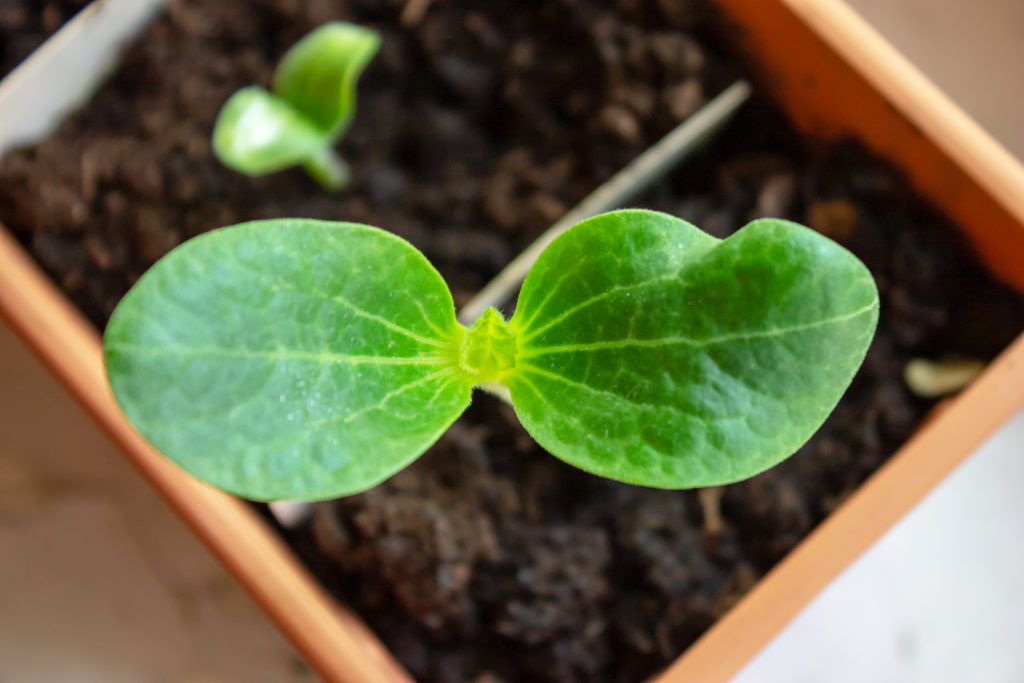
Planting Squash
Squashes are easy to grow but they generally take up a lot of garden space. A vining squash plant needs about 10 square feet of growing room if allowed to sprawl. Squash can be trained vertically on a trellis or tripod to save room. Most squashes are available in bush varieties which take less room.
Squash grows best in humus-rich, well-drained, sandy loam. Add aged compost or a commercial organic planting mix to a depth of 12 inches. Squashes are often planted atop mounds or hills allowing the vines to run down the hill where they can be trained to circle the mound.
Squash are heavy feeders needing a moderate amount of nitrogen and a high amount of phosphorus. Add a slow-release organic fertilizer to the soil at planting time. Plant squash in full sun.
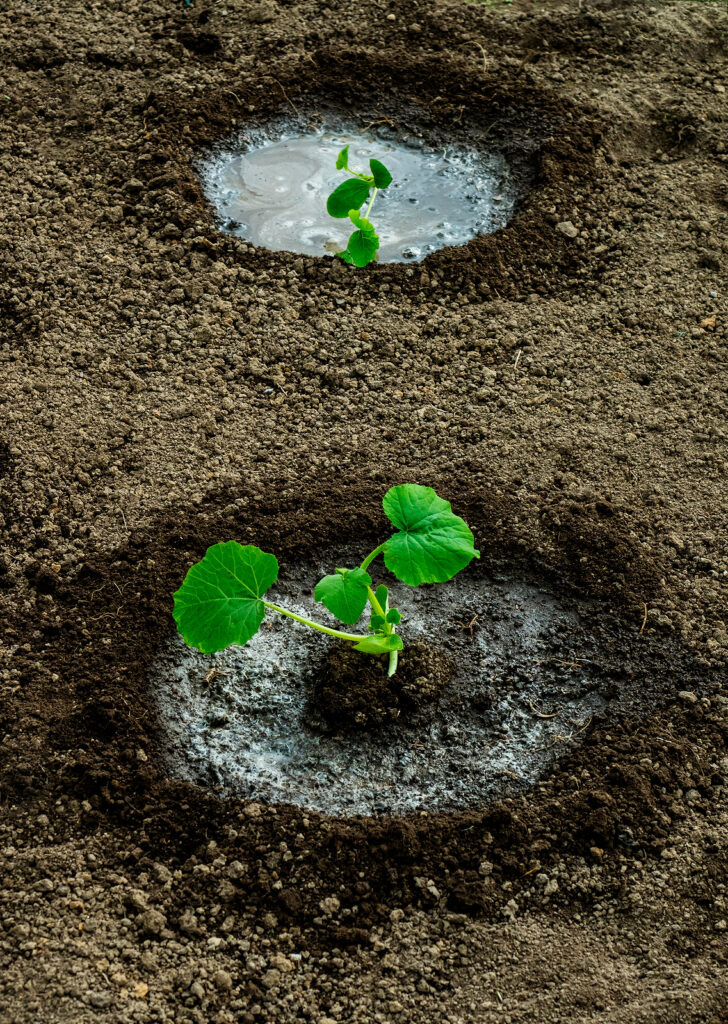
Squash Planting Details
- Sowing depth: 1-2 inches (2.5-5cm)
- Space between plants after thinning: 2-3 feet for summer squash; 3-4 feet between winter squash
- Days to sprout: 7-12
- Days to harvest: 50-60 for summer squash; 80-120 for winter squash
- Storage period: 1-2 weeks for summer squash; 8-24 weeks for winter squash
- Seeds per 100-row feet: 1-2 ounces
- Yield per 100-row feet: 200 pounds
- Suggested summer varieties: Aristocrat, Gold Rush, Scallopini, Early Straightneck
- Suggested winter varieties; Waltham Butternut, Blue Hubbard, Turk’s Turban, Royal Acorn, Vegetable Spaghetti
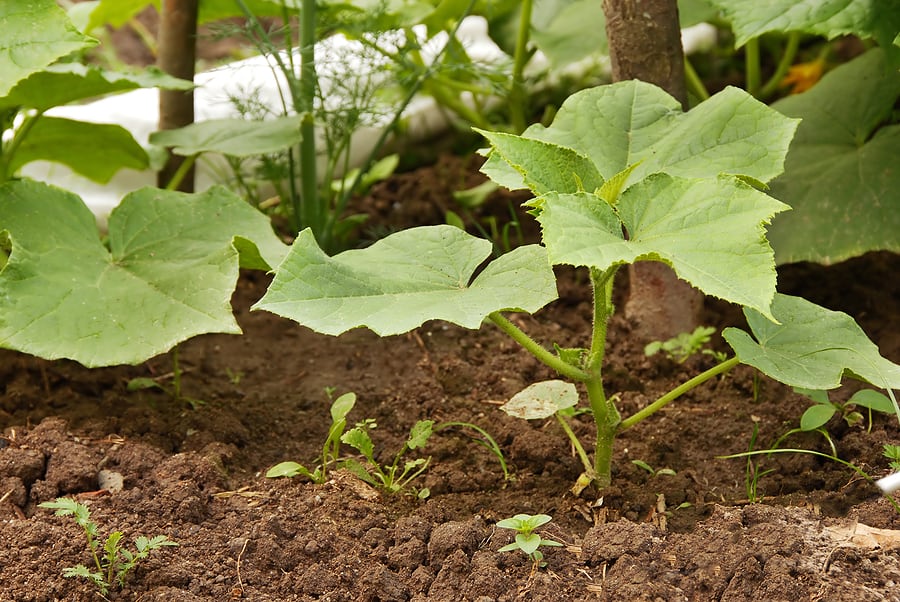
Squash Sowing and Planting Tips
- Grow squash from seeds or seedlings.
- Squash seeds are viable for 6 years.
- Direct sow squash in the garden in spring after all danger of frost has passed and the soil has warmed to 70°F (21°C). In warm-winter regions, sow squash in midwinter for harvest in early summer.
- Squash seeds will not germinate at a soil temperature below 66°F (18°C).
- To start plants indoors, sow seeds in peat pots 4 to 3 weeks before the last frost in spring. The indoor temperature should be 66°F to 85°F (18-29°C) until germination.
- Sow seed ½ to 1 inch (1.3-2.5 cm) deep.
- Seeds germinate in 4 to 10 days at 85°F (29°C) or warmer.
- Transplant squash into the garden after the soil has warmed to at least 70°F (21°C).
- Space plants in the garden 12 to 18 inches (30-45 cm) apart in all directions.
- Squash will benefit from the warm soil created by planting on hills or mounds; raise the soil 12 inches (30 cm) tall and 20 inches (50 cm) wide and grow individual plants on hills. Space hills 4 to 5 feet (1.2-1.5 m) apart.
- Water to keep the soil from drying.
- Fertilize with fish emulsion or a soluble complete fertilizer at half strength.
- Add aged compost to planting beds in advance of transplanting.
- Squash prefers a soil pH range of 5.5 to 6.8.
- Grow squash in full sun for the best yield.
- Avoid planting winter squash where cucumbers or melons have grown recently.
- Common squash pest enemies include aphids, cucumber beetles, flea beetles, squash bugs, squash vine borers, slugs, and snails.
- Common diseases include bacterial wilt, fusarium wilt, downy mildew, powdery mildew, and cucumber mosaic.
Interplanting: Plant winter squash with bush beans, corn, dill, eggplant, lettuce, cucumbers, summer squash, and tomatoes.
Container Growing: Squashes are not a good choice for container growing. They require significant room to spread and grow.
Squash Planting Calendar
- 3-4 weeks before the last frost in spring: start seed indoors for transplanting into the garden later.
- 2-3 weeks after the last frost in spring: transplant seedlings to the garden.
- 3 weeks after the last frost in spring: direct sow seed in the garden; minimum soil temperature 65°
Squash planting dates
(These dates are for the Northern Hemisphere)
| Average date of the last frost | Planting dates |
| Jan. 30 | Feb. 1-Apr.15 |
| Feb. 8 | Feb. 15-Apr. 15 |
| Feb. 18 | Mar. 1-Apr. 15 |
| Feb. 28 | Mar. 15-Apr. 30 |
| Mar. 10 | Apr. 1-May 15 |
| Mar. 20 | Apr. 10-May |
| Mar. 30 | Apr. 10-June 1 |
| Apr. 10 | Apr. 20-June 1 |
| Apr. 20 | May 1-June 15 |
| Apr. 30 | May 1-Jun. 10 |
| May 10 | May 10-June 15 |
| May 20 | May 20-June 15 |
| May 30 | June 1-20 |
| June 10 | June 10-20 |
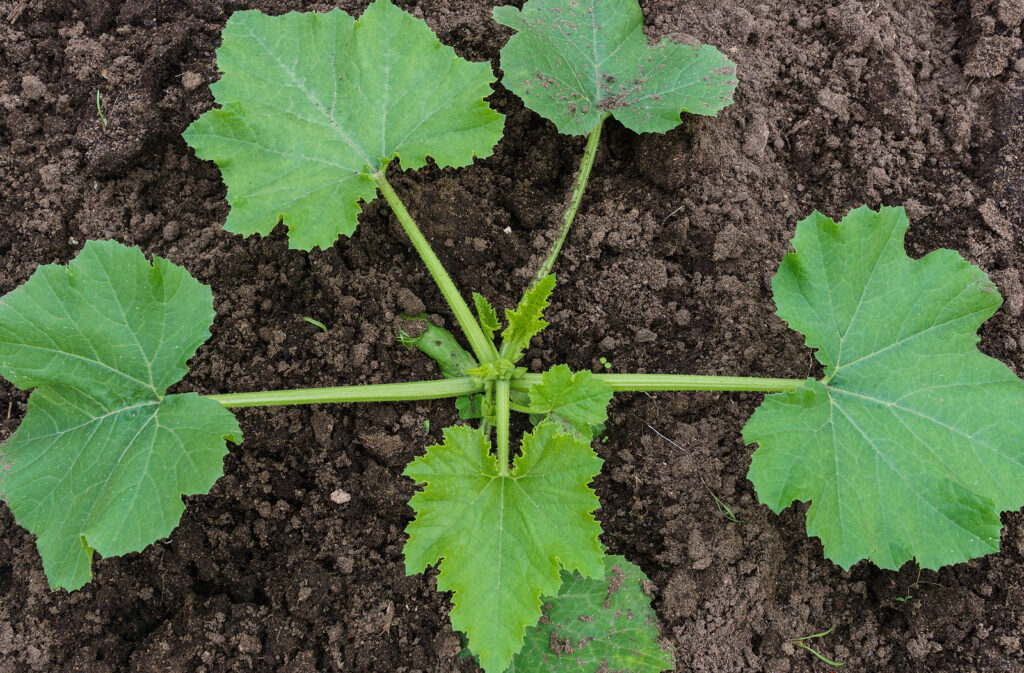
Squash Harvest Time
Summer squashes such as crookneck, scallop, straight-neck, and zucchini mature in 50 to 65 days. Winter squashes such as acorn, banana, buttercup, delicata, Hubbard, spaghetti, and Turk’s turban mature in 60 to 110 days.
Summer squash should be harvested while young and tender when the skin yields to thumb pressure. Winter squash which takes longer to mature should not be harvested until as late as possible in autumn but before the first hard frost. The shells should be hard enough to resist denting by a thumbnail.
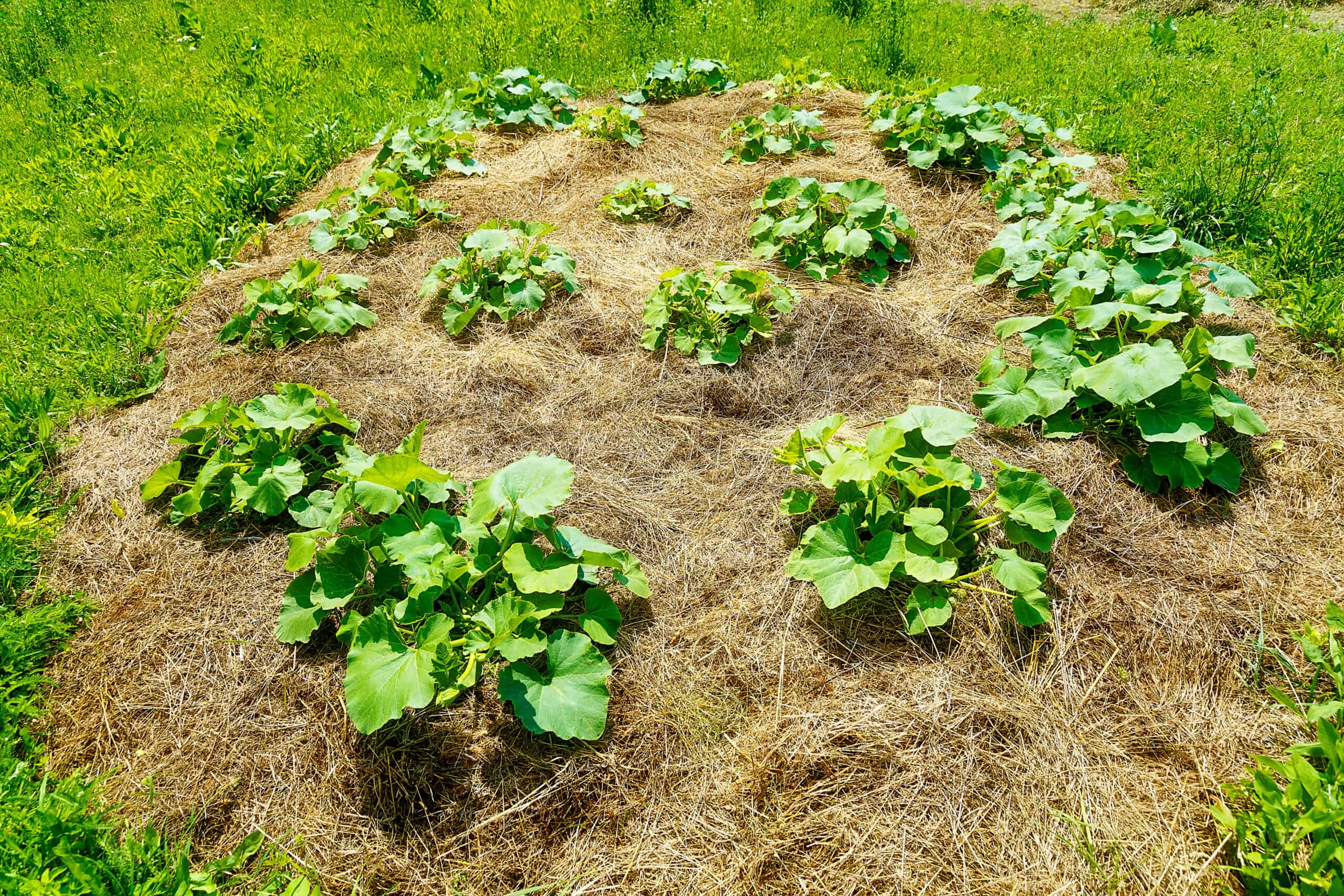
Winter Squash Recommended Varieties
There are many types and varieties of winter squash; here are a few:
- Acorn: acorn-shaped, dark green fruit to 2 pounds.
- Banana: smooth gray-green skin, light orange flesh to 18 inches long.
- Butternut: tan-yellow skin, orange fleshy pulp; elongated pear-shape with a bulbous compartment of seeds at the blossom end
- Buttercup: squat acorn shape; blackish-green rind with yellow-orange flesh.
- Cushaw: green-striped gourd to 15 inches long.
- Hubbard: bluish, gray, orange, or dark green, smooth and warty skin.
- Pumpkins are winter squashes.
- Turban: bright-colored, turban-shaped shells 6 to 7 inches in diameter.
Summer Squash Recommended Varieties
There are many types and varieties of summer squash; here are a few:
- Zucchini: glossy, dark green or yellow cylindrical fruits; ‘Gold Rush’, ‘Spacemaster’; ‘Eightball’ is round.
- Scallop or pattypan: ‘Sunburst’, ‘Starship’, ‘Golden Scallopini Bush’.
- Round or globe: ‘Eight Ball’.
- Crookneck and Straightneck
Botanical Names: Cucurbita maxima, Cucurbita moschata, Cucurbita pepo.
Squash are members of the Cucurbitaceae family; other members are cucumbers, melons, watermelons, and pumpkins.
Related posts you might find helpful:
Summer Squash
- How to Grow Summer Squash and Zucchini: A Gardener’s Guide
- Planting and Growing Summer Squash
- Summer Squash Care and Maintenance
- The Best Summer Squash & Zucchini Varieties for Your Garden
- How to Harvest and Store Summer Squash
- Eight Ways to Cook and Serve Summer Squash
Winter Squash
- The Ultimate Guide to Growing Winter Squash
- Planting and Growing Winter Squash
- Winter Squash Care and Maintenance
- The Best Winter Squash Varieties for Your Garden
- Harvesting & Storing Winter Squash for Long-Term Use
- Seven Ways to Cook and Serve Winter Squash
Squash Planting and Care
- Squash Seed Starting Tips: How to Grow Strong, Healthy Plants from the Start
- How to Maximize Squash Pollination for Bigger Harvests
- Growing Squash in Small Spaces: Trellising & Container Growing
- How to Prevent and Treat Squash Pests and Diseases Naturally
- Squash Vine Borer Organic Pest Control
- Squash Bug Organic Pest Control
Books to help you grow:
- Vegetable Garden Almanac & Planner
- Kitchen Garden Grower’s Guide Vegetable Encyclopedia
- Vegetable Garden Grower’s Guide
- Tomato Grower’s Answer Book
Garden Planning Books at Amazon:
- Vegetable Garden Grower’s Guide
- Tomato Grower’s Answer Book
- Vegetable Garden Almanac & Planner
- Kitchen Garden Grower’s Guide Vegetable Encyclopedia



